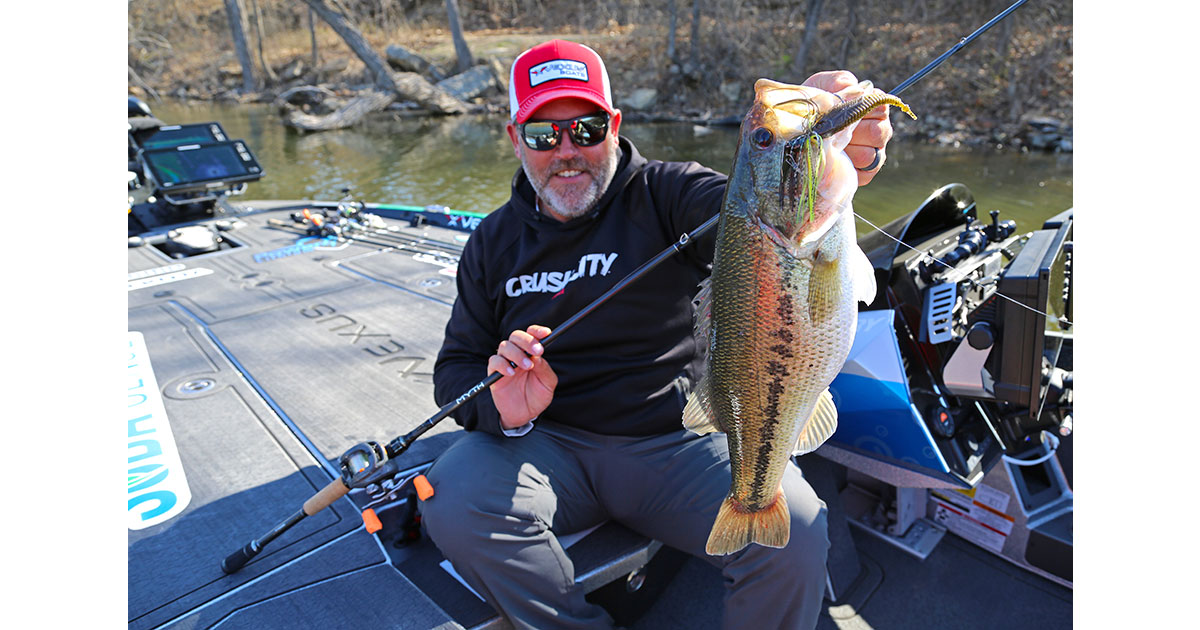- Details
By Al McGuckin

Watching Wisconsin pro Adam Rasmussen drop a jig head minnow on a bass’ head 70-feet from the front deck of his Vexus is as impressive as the days of watching Brett Favre drop passes into the arms of Packer’s all-pro Donald Driver.
But when it’s time to score in tournaments you’re more likely to find Rasmussen slinging any lure with a skirt on it.
“I’m totally comfortable playing the forward-facing sonar game with my Humminbirds, but if you look at my recent wins and high finishes the past couple of seasons, there’s a jig, spinnerbait or ChatterBait involved in every one of them,” says Rasmussen.
- Details
BFHOF Report
When talk begins to center around the significant figures in the history of Texas bass fishing, no conversation is complete without a mention and nod to Earl Golding and Phil Marks.
Both were proud Texans whose vast contributions to the sport made them easy choices to receive the Meritorious Service Award from the Bass Fishing Hall of Fame.
Golding was a Waco-based sportswriter who is credited with starting the first competitive bass tournament while Marks played a pivotal role in developing numerous tournament-proven baits for Strike King that turned into top sellers.
Both Golding and Marks were honored posthumously at a Hall of Fame function Thursday, March 20 in Fort Worth, Texas. They are the sixth and seventh recipients, respectively, of the MSA.
“Learning more about these two gentlemen through our Board’s process in honoring them with the Meritorious Service Award allowed me to gain a deeper appreciation for the impact they had and still have on the sport of bass fishing,” said BFHOF Board President John Mazurkiewicz. “It will be the Board’s honor to celebrate this special recognition with Earl’s and Phil’s family, friends and industry associates in their home state of Texas at one the biggest annual events in the bass fishing world.”
When the late bass fishing legend and Hall of Famer Ray Scott recognizes you by saying "Earl … without a doubt should be considered a forefather of competitive bass fishing," millions of bass angler deserve to know more about Golding.
- Details
By Louie Stout
An innovative Indiana DNR project worked so well the first year that biologists plan to continue it.
The project focuses on excessive small bass numbers in three lakes within the Tri-Lakes of Whitley County in northeast Indiana.
Last season, the DNR plucked 955 bass averaging 10 inches and transported them to Huntington Reservoir, a body of water known for having too few bass.
Tri-Lakes system, which consists of Round, Big Cedar and Little Cedar (270 acres total), has long been known to have a stunted bass population and anglers asked the DNR to do something.
Fisheries research revealed some fish measuring 13 inches were as much as 10 years old! Those fish should have been heavy 3 and 4 pounders.
“When we did an electro-fishing survey there, we got 200 bass an hour,” says biologist Tyler DeLauder. “That’s way above normal.”
Officials hope that reducing the bass population will help rebalance the lake. They plan to continue to remove bass annually for five years, unless studies show better growth results of the bass fishery.
While bass are small, the lake also has been known as an excellent bluegill lake.





